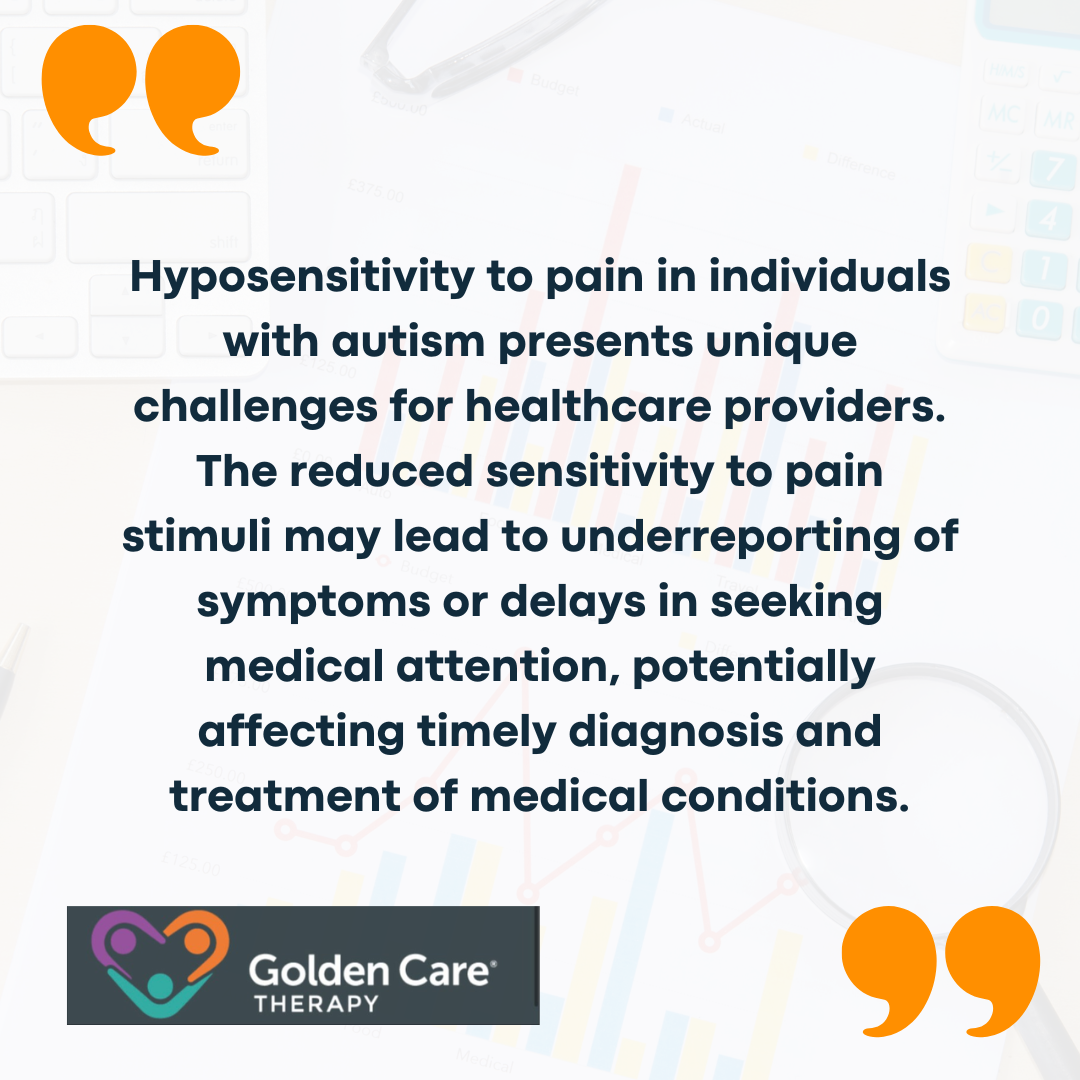Hyposensitivity refers to a sensory processing difference where individuals experience reduced sensitivity to sensory stimuli compared to the average population.
This article explores how hyposensitivity manifests in individuals with autism, particularly in the context of pain perception, and discusses the implications for healthcare, potential causes, current research findings, and strategies for supporting individuals with hyposensitivity.

What is Hyposensitivity?
Hyposensitivity is a sensory processing phenomenon observed across various sensory domains, including touch, taste, smell, sight, and pain perception. In the case of pain, hyposensitivity means that individuals may not perceive pain as acutely as others. This can lead to behaviors where individuals with autism may not react to injuries or discomfort in expected ways.
Autism spectrum disorder (ASD) is characterized by differences in sensory processing, with many individuals experiencing either hypersensitivity or hyposensitivity to sensory stimuli. While hypersensitivity involves heightened sensitivity to certain stimuli, hyposensitivity implies reduced sensitivity. In the context of pain perception, some individuals with autism may exhibit high pain tolerance due to hyposensitivity.
Research indicates that sensory processing differences in autism, including hyposensitivity, may result from neurological variations in how the brain processes and integrates sensory information. Differences in neurotransmitter function, neural connectivity, and genetic factors are believed to contribute to these sensory processing differences.
Causes of Hyposensitivity in Autism
The exact causes of sensory processing differences in autism, including hyposensitivity to pain, are not fully understood.
Genetic factors likely play a significant role, as studies have identified genetic variations associated with sensory processing issues in individuals with ASD. Additionally, differences in brain structure and function, such as altered connectivity between neural networks, may impact how sensory information, including pain signals, is perceived and processed.
Early developmental experiences and environmental factors may also influence sensory processing differences in individuals with autism. Sensory issues are often present from early childhood and can persist into adulthood, affecting how individuals interact with their environment and perceive sensory stimuli.

This would mean that healthcare professionals need to be aware of these sensory processing differences and adjust their assessment and treatment approaches accordingly. Understanding individual sensory profiles and communication styles is crucial for accurately evaluating pain in individuals with autism.
Strategies such as using visual supports, alternative communication methods, and personalized sensory accommodations can help healthcare providers effectively manage pain and address sensory issues in clinical settings.
Supporting Individuals with Hyposensitivity
Supporting individuals with hyposensitivity involves creating environments and interventions that accommodate their unique sensory needs. Educators, caregivers, and healthcare providers can play a crucial role in providing sensory-friendly environments and implementing strategies that support sensory processing differences.
For example, in educational settings, sensory accommodations such as quiet spaces, sensory breaks, and the use of sensory tools (e.g., weighted blankets and fidget toys) can help individuals with autism regulate sensory input and maintain focus.
In healthcare settings, providing clear communication, minimizing sensory stimuli during medical procedures, and allowing extra time for individuals to process sensory information can improve their overall experience and cooperation.
It’s essential to involve individuals with autism and their families in developing personalized strategies that address their specific sensory preferences and challenges. By promoting awareness and understanding of hyposensitivity, we can enhance support systems and promote inclusivity for individuals with autism spectrum disorder.

Research and Studies
Ongoing research into hyposensitivity and pain perception in autism continues to provide valuable insights into sensory processing differences within the autism spectrum. Studies have highlighted variability in pain thresholds and responses among individuals with autism, underscoring the complexity of sensory processing issues in this population.
For example, research suggested that children with autism may exhibit reduced sensitivity to pain stimuli in certain contexts, potentially contributing to their high pain tolerance. Genetic studies have implicated specific genetic factors in sensory processing differences, including hyposensitivity, among individuals with ASD.
Understanding these research findings is essential for developing evidence-based interventions and support strategies tailored to the unique sensory needs of individuals on the autism spectrum. Further research is still needed to explore the underlying mechanisms of sensory processing differences in autism and to enhance clinical practices for managing pain and sensory issues effectively.
Hyposensitivity to pain is a significant aspect of sensory processing differences observed in autism spectrum disorder. While individuals with autism may exhibit high pain tolerance due to reduced sensitivity to pain stimuli, it’s essential to recognize and address their unique sensory needs to ensure their overall well-being and quality of life.
By raising awareness about hyposensitivity and its implications for healthcare and daily life, we can foster better understanding and support for individuals with autism spectrum disorder.
Continued research efforts are crucial for advancing our understanding of sensory processing differences in autism and developing targeted interventions that improve sensory experiences and healthcare outcomes for individuals on the autism spectrum. If you’re seeking support, Golden Care offers services through our ABA center in New Jersey, New York, Georgia, and Indiana. Contact us to learn more or book an appointment today.
Sources:
https://autism.org/study-investigates-responses-to-pain-in-individuals-with-autism
https://www.ncbi.nlm.nih.gov/pmc/articles/PMC3697411
https://www.medoc-web.com/post/autism-spectrum-and-pain-hyper-or-hyposensitive



